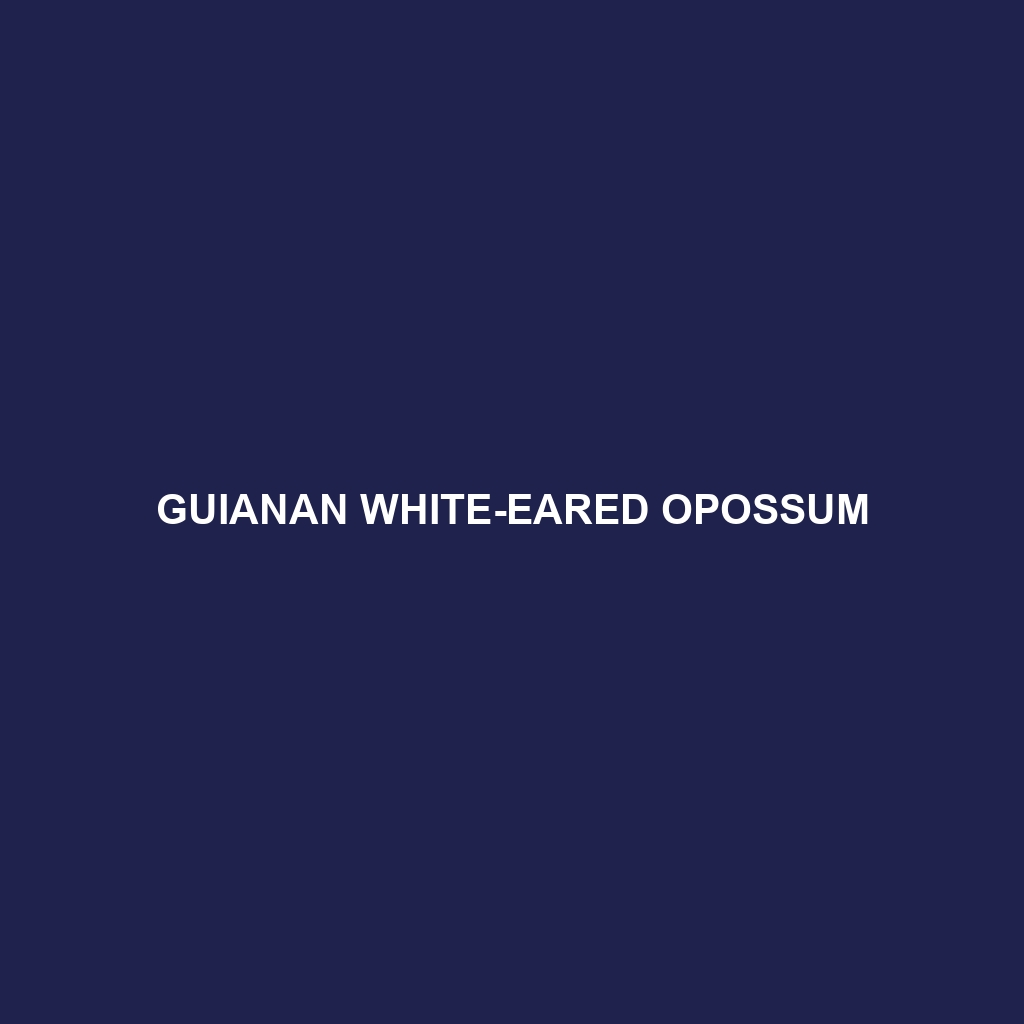Guianan White-eared Opossum (Didelphis imperfecta)
The Guianan White-eared Opossum, scientifically known as Didelphis imperfecta, is a nocturnal marsupial native to the tropical forests of northern South America. Recognizable by its distinct white ear patches, this opossum plays a vital role in its ecosystem as both a scavenger and a seed disperser. Despite facing habitat loss, the species exhibits remarkable adaptability, which has helped it maintain stable population numbers in the wild.
Physical Characteristics
Size: The Guianan White-eared Opossum has a body length ranging from 30 to 45 centimeters (12 to 18 inches) and a tail length of 25 to 40 centimeters (10 to 16 inches). Adults typically weigh between 500 to 1,500 grams (1.1 to 3.3 pounds).
Coloration: Their fur is predominantly grayish-brown with a lighter underbelly. The most striking feature is the distinct white patches on their ears, contrasting with their overall dark fur. They also have a black ring around their eyes, giving them a masked appearance.
Special Features: Like all opossums, they possess a prehensile tail, which they use for climbing and balancing. They also have opposable thumbs on their hind feet, aiding in their arboreal lifestyle.
Behaviors
Social Interactions: Guianan White-eared Opossums are generally solitary creatures, coming together only during the breeding season. They communicate using a range of vocalizations, body language, and scent markings.
Feeding Habits: These opossums are omnivorous and have a varied diet that includes fruits, insects, small vertebrates, and carrion. Their scavenging behavior makes them important for nutrient cycling within their ecosystems.
Ecological Roles: As seed dispersers, they contribute to the regeneration of tropical forests. Additionally, by preying on insects and small animals, they help control pest populations.
Habitats
Range: The Guianan White-eared Opossum is found primarily in the northern regions of South America, including Venezuela, Guyana, Suriname, French Guiana, and parts of Brazil.
Preferred Habitats: They thrive in tropical rainforests, but can also be found in secondary forests, savannas, and even in urban areas. Their adaptability to various habitats has been key to their survival.
Adaptations
Nocturnality: Being nocturnal, these opossums have adapted to avoid daytime predators and reduce competition for food. They have excellent night vision and a keen sense of smell.
Climbing Abilities: Their prehensile tail and opposable thumbs make them adept climbers, allowing them to navigate the forest canopy efficiently.
Dietary Flexibility: Their omnivorous diet allows them to exploit a wide range of food sources, making them incredibly resilient to changes in food availability.
Conservation Status
IUCN Red List: As of the latest assessment, the Guianan White-eared Opossum is listed as “Least Concern” on the IUCN Red List. However, habitat destruction and fragmentation pose ongoing threats.
Conservation Efforts: Conservation initiatives focus on habitat preservation and mitigating human-wildlife conflicts. Protected areas and national parks within their range provide crucial refuges.
Fun Facts
Immune to Venom: Like many opossums, the Guianan White-eared Opossum has a high resistance to snake venom, making them less vulnerable to certain predators.
Self-anointing Behavior: They sometimes engage in self-anointing, where they smear their fur with saliva mixed with various substances. The purpose of this behavior is still not fully understood but may be related to scent marking or parasite control.
Pouchless Marsupial: Unlike kangaroos, the female Guianan White-eared Opossum does not have a well-developed pouch. Instead, the young cling to the mother’s teats and later ride on her back.
By understanding and appreciating the unique attributes of the Guianan White-eared Opossum, we can better appreciate the intricate web of life within tropical ecosystems and the importance of conserving these remarkable creatures and their habitats.
